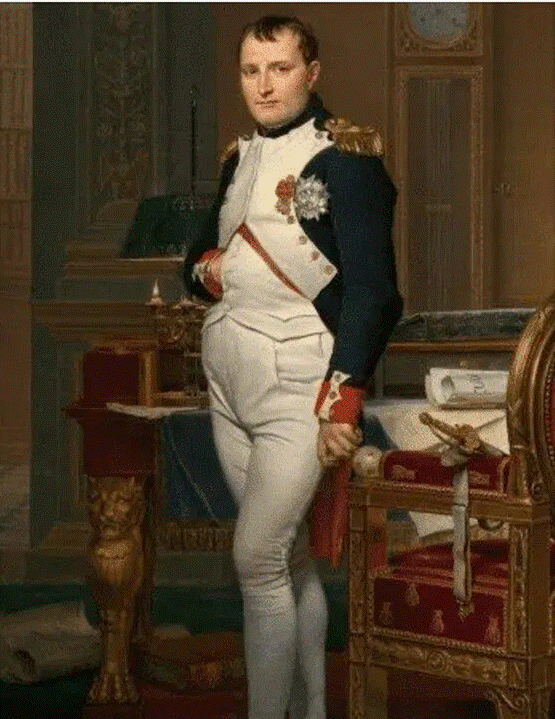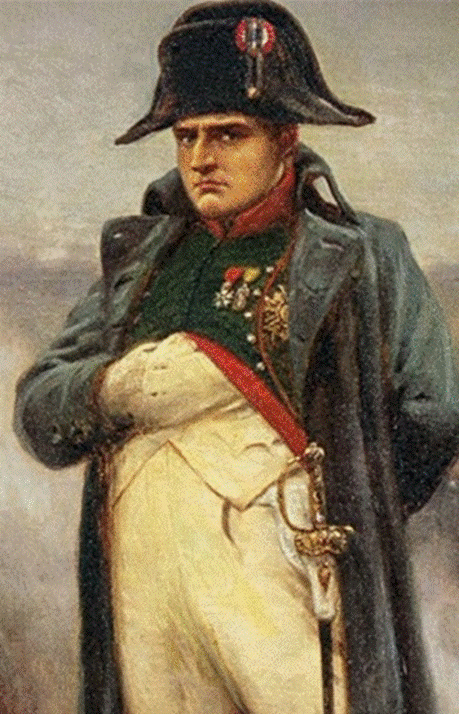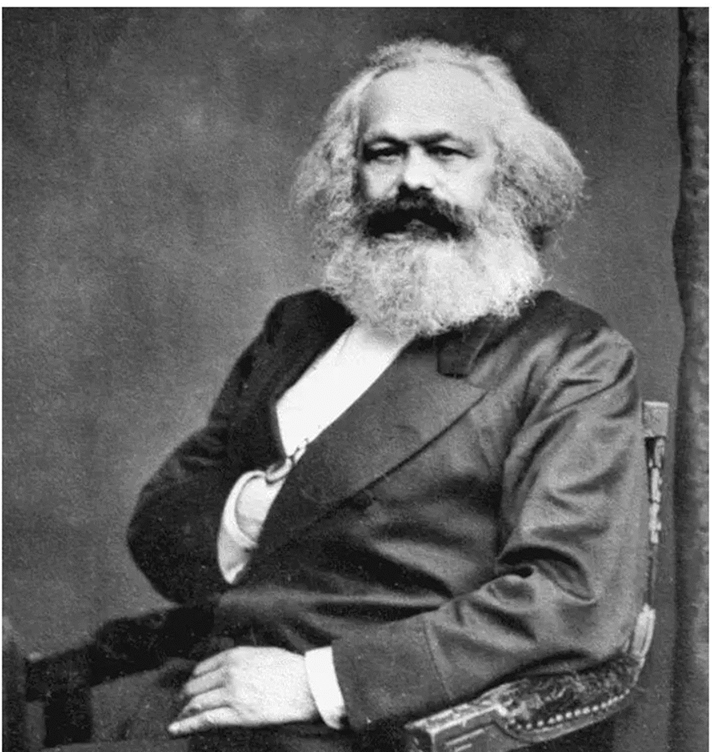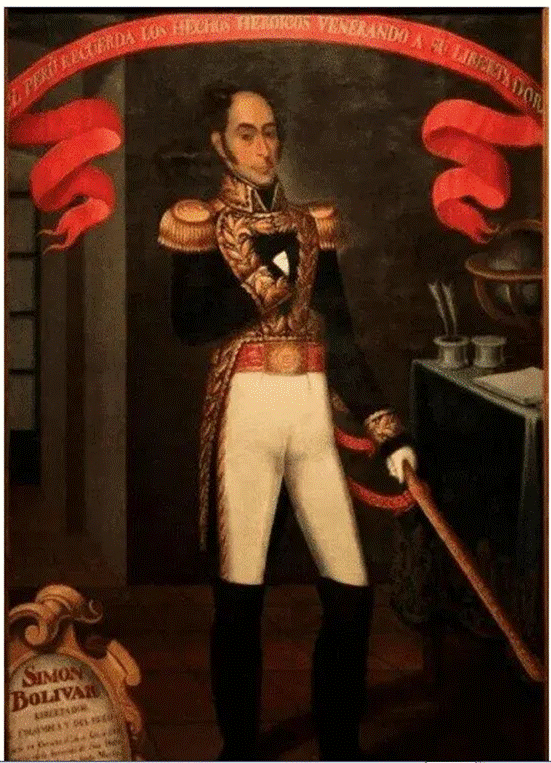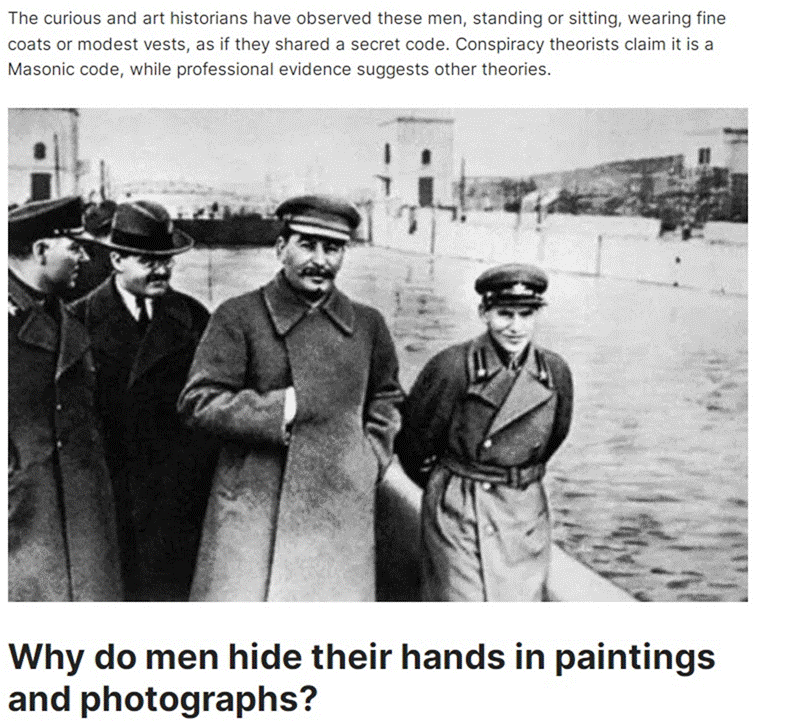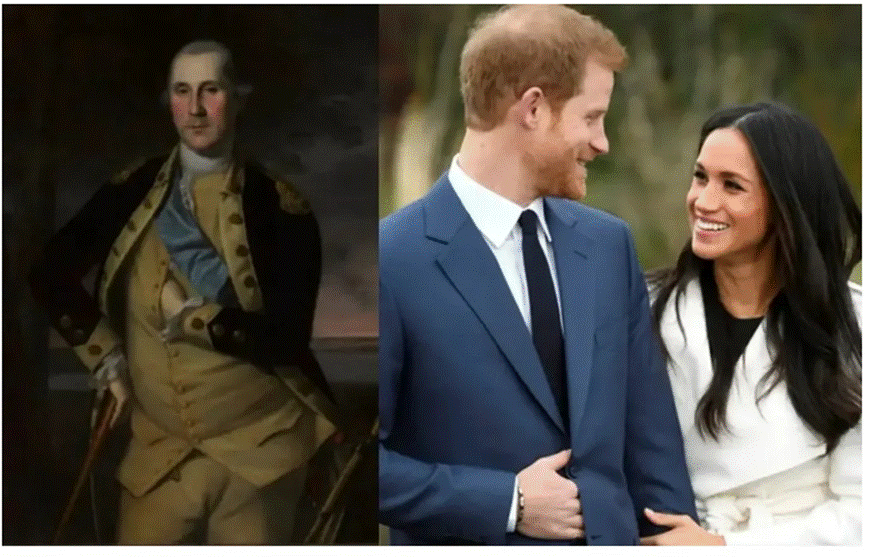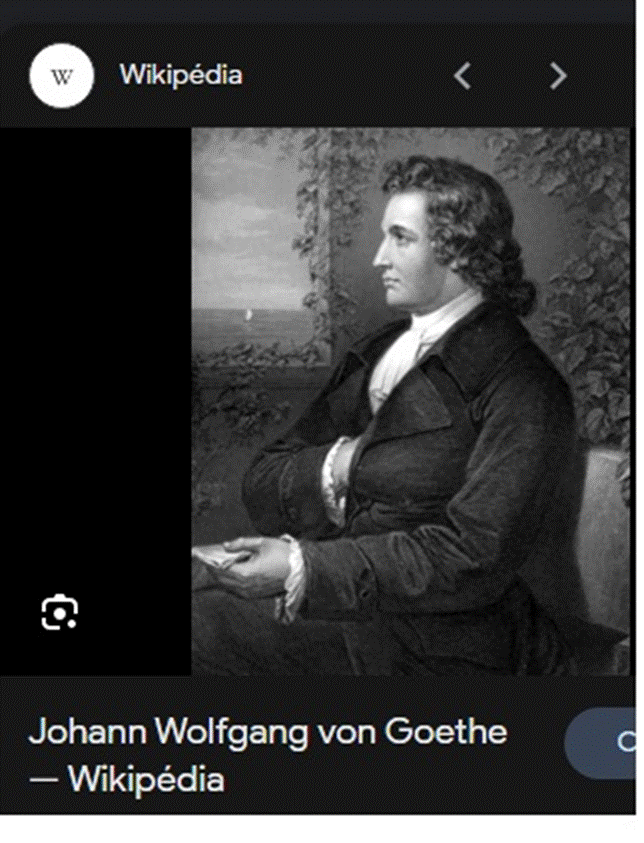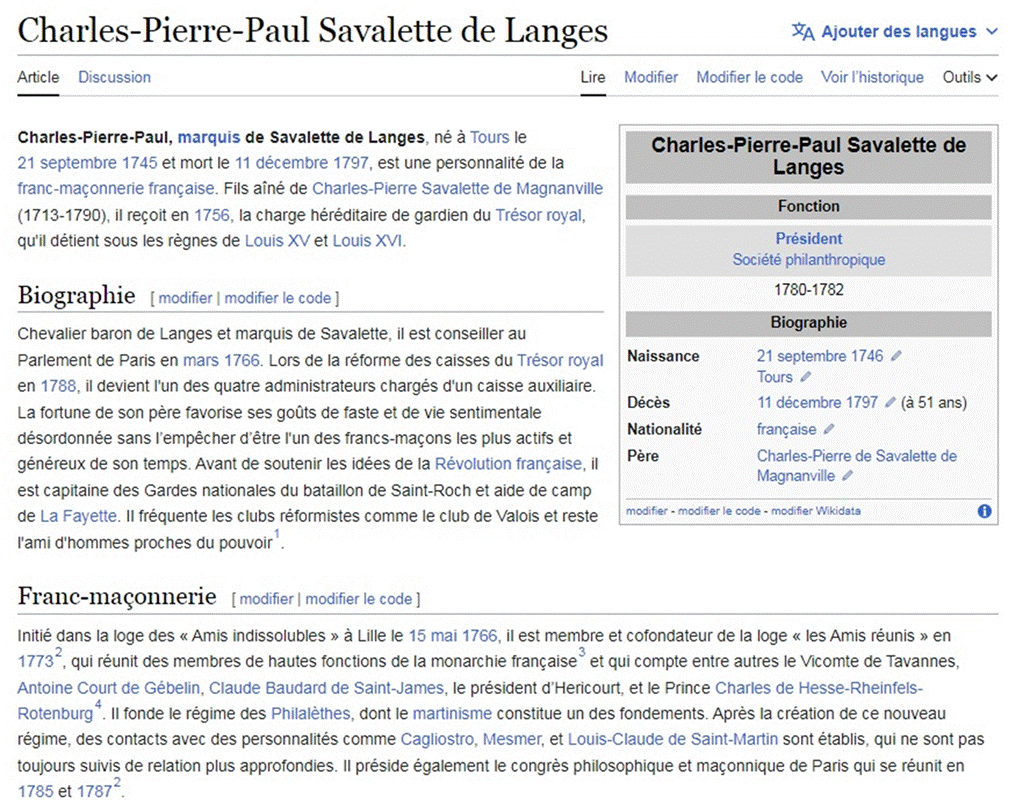| tadewanclik. |
The hand-in-waistcoat (also referred to as
hand-inside-vest, hand-in-jacket, hand-held-in, or hidden hand) is a gesture
commonly found in portraiture during the 18th and 19th centuries. The
pose appeared by the 1750s to indicate leadership in a calm and firm manner1. According to
Arline Meyer’s essay, Re-dressing Classical Statuary: The Eighteenth-Century
“Hand-in-Waistcoat” Portrait, some social circles in ancient Greece
considered it disrespectful to speak with one’s hands out of one’s clothes2. The symbolic meaning
of this gesture may explain why it is so widely used by famous
Masons. The hidden hand lets other initiates know that the individual
depicted is part of this secret Brotherhood and that his actions were
inspired by Masonic philosophy and beliefs2. |
|
https://fr.wikipedia.org/wiki/Rose-Croix |
|
|
|
|
|
|
|
|
|
|
|
|
|
|
|
|
| fr,vans |
|
|
|
|
|
|
|
|
|
|
|
|
|
|
|
|
|
|
|
| index.htm |
El |
|
|
|
|
|
|
|
|
|
|
|
|
|
|
|
|
|
|
| ursprung |

|
|
|
|
|
|
|
|
|
|
|
|
|
|
|
|
|
|
|
| wenzelik |
Any skilled
observer of the history of art will be able to notice that curious and
peculiar pose with which many illustrious men have been portrayed. We’re
talking about that posture in which they hide their hand under their coat or
vest. No matter their origin or context, from the paintings of nobles to some
photographs of people of lesser aristocratic rank, they usually share this
sign, which, by the way, has a much deeper meaning than it seems. |
|
|
|
|
|
|
|
|
|
|
|
|
|
|
|
|
|
|
| vencelik |
The curious
and art historians have observed these men, standing or sitting, wearing fine
coats or modest vests, as if they shared a secret code. Conspiracy theorists
claim it is a Masonic code, while professional evidence suggests other
theories. |
|
|
|
|
|
|
|
|
|
|
|
|
|
|
|
|
|
|
| przemyslides |

|
|
|
|
|
|
|
|
|
|
|
|
|
|
|
|
|
|
|
| piastowie |
Why do men
hide their hands in paintings and photographs? |
|
|
|
|
|
|
|
|
|
|
|
|
|
|
|
|
|
|
| jagielonowie |
According to
Arline Meyer’s essay, Re-dressing Classical Statuary: The Eighteenth-Century
“Hand-in-Waistcoat” Portrait, this tradition goes back long before the 18th
century. Some social circles in ancient Greece considered it disrespectful to
speak with one’s hands out of one’s clothes. Thus, statues from the 6th
century BC showed famous orators such as Solon with their hands tucked into
their cloaks. |
|
|
|
|
|
|
|
|
|
|
|
|
|
|
|
|
|
|
| luxemburgowie |
Centuries
later, when this tradition seemed forgotten, artists began to look to
antiquity for inspiration and returned to depicting subjects in a similar
pose, believing it conveyed a noble, calm demeanor and good manners. |
|
|
|
|
|
|
|
|
|
|
|
|
|
|
|
|
|
|
| moravia |

|
|
|
|
|
|
|
|
|
|
|
|
|
|
|
|
|
|
|
| wanclik |
The pose
became constant in 18th-century portraits, for example, those
of Napoleon Bonaparte. Some think that this pose was a result of the
artist’s poor hand portraiture skills, while others think it may have also
been associated with severe stomach pains caused by cancer. However, it is
more likely that he was following a tradition. |
|
|
|
|
|
|
|
|
|
|
|
|
|
|
|
|
|
|
| malec-osiek |
In 1738,
Francois Nivelon wrote in his book The Rudiments of Genteel Behavior that the
hand-in-vest pose signified manly boldness tempered with modesty. When
photography began to become popular in the early 19th century, this trend
continued to portray personalities such as U.S. President Franklin Pierce,
Joseph Stalin, Simon Bolivar, and Karl Marx. As time went by, this trend
began to diminish. |
|
|
|
|
|
|
|
|
|
|
|
|
|
|
|
|
|
|
| vrchovist |

|
|
|
|
|
|
|
|
|
|
|
|
|
|
|
|
|
|
|
| waza |
Masonic Theory |
|
|
|
|
|
|
|
|
|
|
|
|
|
|
|
|
|
|
| vencelikove |
Believers of
conspiracy theories suggest that most of the people who use this pose are
members of the Freemasons. Considering the great importance of this gesture
in Masonic rituals and the fact that all the elite were part of Freemasonry
or at least knew about it, it is simply impossible that the recurrence of
this sign could be the result of a coincidence. |
|
|
|
|
|
|
|
|
|
|
|
|
|
|
|
|
|
|
| rakoczy |
The “hidden
hand” can be found in some secret rituals, and world leaders who use this
sign are subtly telling other initiates of the order. This hand gesture is
said to be inspired by the Exodus: the heart represents what one is and the
hand what one does. It can therefore be interpreted as: What we are is what
we do. |
|
|
|
|
|
|
|
|
|
|
|
|
|
|
|
|
|
|
| krolestwo-lechii |

|
|
|
|
|
|
|
|
|
|
|
|
|
|
|
|
|
|
|
| vchrovist |
The symbolic
meaning of this gesture may explain why it is so widely used by famous
Masons. The hidden hand lets other initiates know that the individual
depicted is part of this secret Brotherhood and that his actions were
inspired by Masonic philosophy and beliefs. In addition, the hand that
performs actions remains hidden behind the cloth, which may symbolically
refer to the covert nature of Freemasonry. |
|
|
|
|
|
|
|
|
|
|
|
|
|
|
|
|
|
|
| zirownice |
Translated by
María Isabel Carrasco Cara Chards |
|
|
|
|
|
|
|
|
|
|
|
|
|
|
|
|
|
|
| trest |
Photos from Wikimedia Commons |
|
|
|
|
|
|
|
|
|
|
|
|
|
|
|
|
|
|
| smiszek |
Why Do Men Tuck One Hand On Their Clothes In Paintings And
Photographs? - Cultura Colectiva |
|
|
|
|
|
|
|
|
|
|
|
|
|
|
|
|
|
|
| plus |
|
|
|
|
|
|
|
|
|
|
|
|
|
|
|
|
|
|
|
| hradek |
|
|
|
|
|
|
|
|
|
|
|
|
|
|
|
|
|
|
|
| libeniczti |
|
|
|
|
|
|
|
|
|
|
|
|
|
|
|
|
|
|
| leibniz |
|
|
|
|
|
|
|
|
|
|
|
|
|
|
|
|
|
|
| nobility |
|
|
|
|
|
|
|
|
|
|
|
|
|
|
|
|
|
|
| wanc- |
|
|
|
|
|
|
|
|
|
|
|
|
|
|
|
|
|
|
| historia |
|
|
|
|
|
|
|
|
|
|
|
|
|
|
|
|
|
|
| wanda |
|
|
|
|
|
|
|
|
|
|
|
|
|
|
|
|
|
|
| monnaies |
|
|
|
|
|
|
|
|
|
|
|
|
|
|
|
|
|
|
| czeska szlachta |
|
|
|
|
|
|
|
|
|
|
|
|
|
|
|
|
|
|
| venclik z chrovist |
|
|
|
|
|
|
|
|
|
|
|
|
|
|
|
|
|
|
| hussites |
|
|
|
|
|
|
|
|
|
|
|
|
|
|
|
|
|
|
| bila hora |
|
|
|
|
|
|
|
|
|
|
|
|
|
|
|
|
|
|
| bakalarzska |
|
|
|
|
|
|
|
|
|
|
|
|
|
|
|
|
|
|
| jihoczeska |
|
|
|
|
|
|
|
|
|
|
|
|
|
|
|
|
|
|
| protestantisme |
|
|
|
|
|
|
|
|
|
|
|
|
|
|
|
|
|
|
| reforme |
|
|
|
|
|
|
|
|
|
|
|
|
|
|
|
|
|
|
| christophori |
|
|
|
|
|
|
|
|
|
|
|
|
|
|
|
|
|
|
| christophori |
|
|
|
|
|
|
|
|
|
|
|
|
|
|
|
|
|
|
| infos |
|
|
|
|
|
|
|
|
|
|
|
|
|
|
|
|
|
|
| clausel |
|
|
|
|
|
|
|
|
|
|
|
|
|
|
|
|
|
|
| rakoczy-2 |
|
|
|
|
|
|
|
|
|
|
|
|
|
|
|
|
|
|
| saint germain |
|
|
|
|
|
|
|
|
|
|
|
|
|
|
|
|
|
|
| rakoczy 1 |
|
|
|
|
|
|
|
|
|
|
|
|
|
|
|
|
|
|
| rakoczy3 |
|
|
|
|
|
|
|
|
|
|
|
|
|
|
|
|
|
|
| lubomirski |
|
|
|
|
|
|
|
|
|
|
|
|
|
|
|
|
|
|
| czartoryski |
|
|
|
|
|
|
|
|
|
|
|
|
|
|
|
|
|
|
| 23andme |
|
|
|
|
|
|
|
|
|
|
|
|
|
|
|
|
|
|
| venter |
|
|
|
|
|
|
|
|
|
|
|
|
|
|
|
|
|
|
| wittelsbach |
|
|
|
|
|
|
|
|
|
|
|
|
|
|
|
|
|
|
| ssd-adn |
|
|
|
|
|
|
|
|
|
|
|
|
|
|
|
|
|
|
| korycinski |
|
|
|
|
|
|
|
|
|
|
|
|
|
|
|
|
|
|
| saint germain |
|
|
|
|
|
|
|
|
|
|
|
|
|
|
|
|
|
|
| chiappini |
|
|
|
|
|
|
|
|
|
|
|
|
|
|
|
|
|
|
| tellechea |
|
|
|
|
|
|
|
|
|
|
|
|
|
|
|
|
|
|
| rodrigues |
|
|
|
|
|
|
|
|
|
|
|
|
|
|
|
|
|
|
| de souza |
|
|
|
|
|
|
|
|
|
|
|
|
|
|
|
|
|
|
| da cunha |
|
|
|
|
|
|
|
|
|
|
|
|
|
|
|
|
|
|
|
| nicastro |
|
|
|
|
|
|
|
|
|
|
|
|
|
|
|
|
|
|
|
| hayez |
|
|
|
|
|
|
|
|
|
|
|
|
|
|
|
|
|
|
| delacour |
|
|
|
|
|
|
|
|
|
|
|
|
|
|
|
|
|
|
| cvanclik |
|
|
|
|
|
|
|
|
|
|
|
|
|
|
|
|
|
|
| svanclik |
|
|
|
|
|
|
|
|
|
|
|
|
|
|
|
|
|
|
| fvanclik |
|
|
|
|
|
|
|
|
|
|
|
|
|
|
|
|
|
|
| rvanclik |
|
|
|
|
|
|
|
|
|
|
|
|
|
|
|
|
|
|
| wanc |
|
|
|
|
|
|
|
|
|
|
|
|
|
|
|
|
|
|
| fr,vans |
|
|
|
|
|
|
|
|
|
|
|
|
|
|
|
|
|
|
| fr,vance |
|
|
|
|
|
|
|
|
|
|
|
|
|
|
|
|
|
|
| faustine |
|
|
|
|
|
|
|
|
|
|
|
|
|
|
|
|
|
|
| rubens |
|
|
|
|
|
|
|
|
|
|
|
|
|
|
|
|
|
|
| luigi |
|
|
|
|
|
|
|
|
|
|
|
|
|
|
|
|
|
|
| adrien |
|
|
|
|
|
|
|
|
|
|
|
|
|
|
|
|
|
|
| raphael |
|
|
|
|
|
|
|
|
|
|
|
|
|
|
|
|
|
|
| otavio |
|
|
|
|
|
|
|
|
|
|
|
|
|
|
|
|
|
|
| wanc.free.fr/ |
|
|
|
|
|
|
|
|
|
|
|
|
|
|
|
|
|
|
|
|
|
|
|
|
|
|
|
|
|
|
|
|
|
|
|
|
|
|
|
|
|
|
|
|
|
|
|
|
|
|
|
|
|
|
|
|
|
|
|
|
|
|
|
|
|
|
|
|
|
|
|
|
|
|
|
|
|
|
|
|
|
|
|
|
|
|
|
|
|
|
|
|
|
|
|
|
|
|
|
|
|
|
|
|
|
|
|
|
|
|
|
|
|
|
|
|
|
|
|
|
|
|
|
|
|
|
|
|
|
|
|
|
|
|
|
|
|
|
|
|
|
|
|
|
|
|
|
|
|
|
|
|
|
|
|
|
|
|
|
|
|
|
|
|
|
|
|
|
|
|
|
|
|
|
|
|
|
|
|
|
|
|
|
|
|
|
|
|
|
|
|
|
|
|
|
|
|
|
|
|
|
|
|
|
|
|
|
|
|
|
|
|
|
|
|
|
|
|
|
|
|
|
|
|
|
|
|
|
|
|
|
|
|
|
|
|
|
|
|
|
|
|
|
|
|
|
|
|
|
|
|
|
|
|
|
|
|
|
|
|
|
|
|
|
|
|
|
|
|
|
|
|
|
|
|
|
|
|
|
|
|
|
|
|
|
|
|
|
|
|
|
|
|
|
|
|
|
|
|
|
|
|
|
|
|
|
|
|
|
|
|
|
|
|
|
|
|
|
|
|
|
|
|
|
|
|
|
|
|
|
|
|
|
|
|
|
|
|
|
|
|
|
|
|
|
|
|
|
|
|
|
|
|
|
|
|
|
|
|
|
|
|
|
|
|
|
|
|
|
|
|
|
|
|
|
|
|
|
|
|
|
|
|
|
|
|
|
|
|
|
|
|
|
|
|
|
|
|
|
|
|
|
|
|
|
|
|
|
|
|
|
|
|
|
|
|
|
|
|
|
|
|
|
|
|
|
|
|
|
|
|
|
|
|
|
|
|
|
|
|
|
|
|
|
|
|
|
|
|
|
|
|
|
|
|
|
|
|
|
|
|
|
|
|
|
|
|
|
|
|
|
|
|
|
|
|
|
|
|
|
|
|
|
|
|
|
|
|
|
|
|
|
|
|
|
|
|
|
|
|
|
|
|
|
|
|
|
|
|
|
|
|
|
|
|
|
|
|
|
|
|
|
|
|
|
|
|
|
|
|
|
|
|
|
|
|
|
|
|
|
|
|
|
|
|
|
|
|
|
|
|
|
|
|
|
|
|
|
|
|
|
|
|
|
|
|
|
|
|
|
|
|
|
|
|
|
|
|
|
|
|
|
|
|
|
|
|
|
|
|
|
|
|
|
|
|
|
|
|
|
|
|
|
|
|
|
|
|
|
|
|
|
|
|
|
|
|
|
|
|
|
|
|
|
|
|
|
|
|
|
|
|
|
|
|
|
|
|
|
|
|
|
|
|
|
|
|
|
|
|
|
|
|
|
|
|
|
|
|
|
|
|
|
|
|
|
|
|
|
|
|
|
|
|
|
|
|
|
|
|
|
|
|
|
|
|
|
|
|
|
|
|
|
|
|
|
|
|
|
|
|
|
|
|
|
|
|
|
|
|
|
|
|
|
|
|
|
|
|
|
|
|
|
|
|
|
|
|
|
|
|
|
|
|
|
|
|
|
|
|
|
|
|
|
|
|
|
|
|
|
|
|
|
|
|
|
|
|
|
|
|
|
|
|
|
|
|
|
|
|
|
|
|
|
|
|
|
|
|
|
|
|
|
|
|
|
|
|
|
|
|
|
|
|
|
|
|
|
|
|
|
|
|
|
|
|
|
|
|
|
|
|
|
|
|
|
|
|
|
|
|
|
|
|
|
|
|
|
|
|
|
|
|
|
|
|
|
|
|
|
|
|
|
|
|
|
|
|
|
|
|
|
|
|
|
|
|
|
|
|
|
|
|
|
|
|
|
|
|
|
|
|
|
|
|
|
|
|
|
|
|
|
|
|
|
|
|
|
|
|
|
|
|
|
|
|
|
|
|
|
|
|
|
|
|
|
|
|
|
|
|
|
|
|
|
|
|
|
|
|
|
|
|
|
|
|
|
|
|
|
|
|
|
|
|
|
|
|
|
|
|
|
|
|
|
|
|
|
|
|
|
|
|
|
|
|
|
|
|
|
|
|
|
|
|
|
|
|
|
|
|
|
|
|
|
|
|
|
|
|
|
|
|
|
|
|
|
|
|
|
|
|
|
|
|
|
|
|
|
|
|
|
|
|
|
|
|
|
|
|
|
|
|
|
|
|
|
|
|
|
|
|
|
|
|
|
|
|
|
|
|
|
|
|
|
|
|
|
|
|
|
|
|
|
|
|
|
|
|
|
|
|
|
|
|
|
|
|
|
|
|
|
|
|
|
|
|
|
|
|
|
|
|
|
|
|
|
|
|
|
|
|
|
|
|
|
|
|
|
|
|
|
|
|
|
|
|
|
|
|
|
|
|
|
|
|
|
|
|
|
|
|
|
|
|
|
|
|
|
|
|
|
|
|
|
|
|
|
|
|
|
|
|
|
|
|
|
|
|
|
|
|
|
|
|
|
|
|
|
|
|
|
|
|
|
|
|
|
|
|
|
|
|
|
|
|
|
|
|
|
|
|
|
|
|
|
|
|
|
|
|
|
|
|
|
|
|
|
|
|
|
|
|
|
|
|
|
|
|
|
|
|
|
|
|
|
|
|
|
|
|
|
|
|
|
|
|
|
|
|
|
|
|
|
|
|
|
|
|
|
|
|
|
|
|
|
|
|
|
|
|
|
|
|
|
|
|
|
|
|
|
|
|
|
|
|
|
|
|
|
|
|
|
|
|
|
|
|
|
|
|
|
|
|
|
|
|
|
|
|
|
|
|
|
|
|
|
|
|
|
|
|
|
|
|
|
|
|
|
|
|
|
|
|
|
|
|
|
|
|
|
|
|
|
|
|
|
|
|
|
|
|
|
|
|
|
|
|
|
|
|
|
|
|
|
|
|
|
|
|
|
|
|
|
|
|
|
|
|
|
|
|
|
|
|
|
|
|
|
|
|
|
|
|
|
|
|
|
|
|
|
|
|
|
|
|
|
|
|
|
|
|
|
|
|
|
|
|
|
|
|
|
|
|
|
|
|
|
|
|
|
|
|
|
|
|
|
|
|
|
|
|
|
|
|
|
|
|
|
|
|
|
|
|
|
|
|
|
|
|
|
|
|
|
|
|
|
|
|
|
|
|
|
|
|
|
|
|
|
|
|
|
|
|
|
|
|
|
|
|
|
|
|
|
|
|
|
|
|
|
|
|
|
|
|
|
|
|
|
|
|
|
|
|
|
|
|
|
|
|
|
|
|
|
|
|
|
|
|
|
|
|
|
|
|
|
|
|
|
|
|
|
|
|
|
|
|
|
|
|
|
|
|
|
|
|
|
|
|
|
|
|
|
|
|
|
|
|
|
|
|
|
|
|
|
|
|
|
|
|
|
|
|
|
|
|
|
|
|
|
|
|
|
|
|
|
|
|
|
|
|
|
|
|
|
|
|
|
|
|
|
|
|
|
|
|
|
|
|
|
|
|
|
|
|
|
|
|
|
|
|
|
|
|
|
|
|
|
|
|
|
|
|
|
|
|
|
|
|
|
|
|
|
|
|
|
|
|
|
|
|
|
|
|
|
|
|
|
|
|
|
|
|
|
|
|
|
|
|
|
|
|
|
|
|
|
|
|
|
|
|
|
|
|
|
|
|
|
|
|
|
|
|
|
|
|
|
|
|
|
|
|
|
|
|
|
|
|
|
|
|
|
|
|
|
|
|
|
|
|
|
|
|
|
|
|
|
|
|
|
|
|
|
|
|
|
|
|
|
|
|
|
|
|
|
|
|
|
|
|
|
|
|
|
|
|
|
|
|
|
|
|
|
|
|
|
|
|
|
|
|
|
|
|
|
|
|
|
|
|
|
|
|
|
|
|
|
|
|
|
|
|
|
|
|
|
|
|
|
|
|
|
|
|
|
|
|
|
|
|
|
|
|
|
|
|
|
|
|
|
|
|
|
|
|
|
|
|
|
|
|
|
|
|
|
|
|
|
|
|
|
|
|
|
|
|
|
|
|
|
|
|
|
|
|
|
|
|
|
|
|
|
|
|
|
|
|
|
|
|
|
|
|
|
|
|
|
|
|
|
|
|
|
|
|
|
|
|
|
|
|
|
|
|
|
|
|
|
|
|
|
|
|
|
|
|
|
|
|
|
|
|
|
|
|
|
|
|
|
|
|
|
|
|
|
|
|
|
|
|
|
|
|
|
|
|
|
|
|
|
|
|
|
|
|
|
|
|
|
|
|
|
|
|
|
|
|
|
|
|
|
|
|
|
|
|
|
|
|
|
|
|
|
|
|
|
|
|
|
|
|
|
|
|
|
|
|
|
|
|
|
|
|
|
|
|
|
|
|
|
|
|
|
|
|
|
|
|
|
|
|
|
|
|
|
|
|
|
|
|
|
|
|
|
|
|
|
|
|
|
|
|
|
|
|
|
|
|
|
|
|
|
|
|
|
|
|
|
|
|
|
|
|
|
|
|
|
|
|
|
|
|
|
|
|
|
|
|
|
|
|
|
|
|
|
|
|
|
|
|
|
|
|
|
|
|
|
|
|
|
|
|
|
|
|
|
|
|
|
|
|
|
|
|
|
|
|
|
|
|
|
|
|
|
|
|
|
|
|
|
|
|
|
|
|
|
|
|
|
|
|
|
|
|
|
|
|
|
|
|
|
|
|
|
|
|
|
|
|
|
|
|
|
|
|
|
|
|
|
|
|
|
|
|
|
|
|
|
|
|
|
|
|
|
|
|
|
|
|
|
|
|
|
|
|
|
|
|
|
|
|
|
|
|
|
|
|
|
|
|
|
|
|
|
|
|
|
|
|
|
|
|
|
|
|
|
|
|
|
|
|
|
|
|
|
|
|
|
|
|
|
|
|
|
|
|
|
|
|
|
|
|
|
|
|
|
|
|
|
|
|
|
|
|
|
|
|
|
|
|
|
|
|
|
|
|
|
|
|
|
|
|
|
|
|
|
|
|
|
|
|
|
|
|
|
|
|
|
|
|
|
|
|
|
|
|
|
|
|
|
|
|
|
|
|
|
|
|
|
|
|
|
|
|
|
|
|
|
|
|
|
|
|
|
|
|
|
|
|
|
|
|
|
|
|
|
|
|
|
|
|
|
|
|
|
|
|
|
|
|
|
|
|
|
|
|
|
|
|
|
|
|
|
|
|
|
|
|
|
|
|
|
|
|
|
|
|
|
|
|
|
|
|
|
|
|
|
|
|
|
|
|
|
|
|
|
|
|
|
|
|
|
|
|
|
|
|
|
|
|
|
|
|
|
|
|
|
|
|
|
|
|
|
|
|
|
|
|
|
|
|
|
|
|
|
|
|
|
|
|
|
|
|
|
|
|
|
|
|
|
|
|
|
|
|
|
|
|
|
|
|
|
|
|
|
|
|
|
|
|
|
|
|
|
|
|
|
|
|
|
|
|
|
|
|
|
|
|
|
|
|
|
|
|
|
|
|
|
|
|
|
|
|
|
|
|
|
|
|
|
|
|
|
|
|
|
|
|
|
|
|
|
|
|
|
|
|
|
|
|
|
|
|
|
|
|
|
|
|
|
|
|
|
|
|
|
|
|
|
|
|
|
|
|
|
|
|
|
|
|
|
|
|
|
|
|
|
|
|
|
|
|
|
|
|
|
|
|
|
|
|
|
|
|
|
|
|
|
|
|
|
|
|
|
|
|
|
|
|
|
|
|
|
|
|
|
|
|
|
|
|
|
|
|
|
|
|
|
|
|
|
|
|
|
|
|
|
|
|
|
|
|
|
|
|
|
|
|
|
|
|
|
|
|
|
|
|
|
|
|
|
|
|
|
|
|
|
|
|
|
|
|
|
|
|
|
|
|
|
|
|
|
|
|
|
|
|
|
|
|
|
|
|
|
|
|
|
|
|
|
|
|
|
|
|
|
|
|
|
|
|
|
|
|
|
|
|
|
|
|
|
|
|
|
|
|
|
|
|
|
|
|
|
|
|
|
|
|
|
|
|
|
|
|
|
|
|
|
|
|
|
|
|
|
|
|
|
|
|
|
|
|
|
|
|
|
|
|
|
|
|
|
|
|
|
|
|
|
|
|
|
|
|
|
|
|
|
|
|
|
|
|
|
|
|
|
|
|
|
|
|
|
|
|
|
|
|
|
|
|
|
|
|
|
|
|
|
|
|
|
|
|
|
|
|
|
|
|
|
|
|
|
|
|
|
|
|
|
|
|
|
|
|
|
|
|
|
|
|
|
|
|
|
|
|
|
|
|
|
|
|
|
|
|
|
|
|
|
|
|
|
|
|
|
|
|
|
|
|
|
|
|
|
|
|
|
|
|
|
|
|
|
|
|
|
|
|
|
|
|
|
|
|
|
|
|
|
|
|
|
|
|
|
|
|
|
|
|
|
|
|
|
|
|
|
|
|
|
|
|
|
|
|
|
|
|
|
|
|
|
|
|
|
|
|
|
|
|
|
|
|
|
|
|
|
|
|
|
|
|
|
|
|
|
|
|
|
|
|
|
|
|
|
|
|
|
|
|
|
|
|
|
|
|
|
|
|
|
|
|
|
|
|
|
|
|
|
|
|
|
|
|
|
|
|
|
|
|
|
|
|
|
|
|
|
|
|
|
|
|
|
|
|
|
|
|
|
|
|
|
|
|
|
|
|
|
|
|
|
|
|
|
|
|
|
|
|
|
|
|
|
|
|
|
|
|
|
|
|
|
|
|
|
|
|
|
|
|
|
|
|
|
|
|
|
|
|
|
|
|
|
|
|
|
|
|
|
|
|
|
|
|
|
|
|
|
|
|
|
|
|
|
|
|
|
|
|
|
|
|
|
|
|
|
|
|
|
|
|
|
|
|
|
|
|
|
|
|
|
|
|
|
|
|
|
|
|
|
|
|
|
|
|
|
|
|
|
|
|
|
|
|
|
|
|
|
|
|
|
|
|
|
|
|
|
|
|
|
|
|
|
|
|
|
|
|
|
|
|
|
|
|
|
|
|
|
|
|
|
|
|
|
|
|
|
|
|
|
|
|
|
|
|
|
|
|
|
|
|
|
|
|
|
|
|
|
|
|
|
|
|
|
|
|
|
|
|
|
|
|
|
|
|
|
|
|
|
|
|
|
|
|
|
|
|
|
|
|
|
|
|
|
|
|
|
|
|
|
|
|
|
|
|
|
|
|
|
|
|
|
|
|
|
|
|
|
|
|
|
|
|
|
|
|
|
|
|
|
|
|
|
|
|
|
|
|
|
|
|
|
|
|
|
|
|
|
|
|
|
|
|
|
|
|
|
|
|
|
|
|
|
|
|
|
|
|
|
|
|
|
|
|
|
|
|
|
|
|
|
|
|
|
|
|
|
|
|
|
|
|
|
|
|
|
|
|
|
|
|
|
|
|
|
|
|
|
|
|
|
|
|
|
|
|
|
|
|
|
|
|
|
|
|
|
|
|
|
|
|
|
|
|
|
|
|
|
|
|
|
|
|
|
|
|
|
|
|
|
|
|
|
|
|
|
|
|
|
|
|
|
|
|
|
|
|
|
|
|
|
|
|
|
|
|
|
|
|
|
|
|
|
|
|
|
|
|
|
|
|
|
|
|
|
|
|
|
|
|
|
|
|
|
|
|
|
|
|
|
|
|
|
|
|
|
|
|
|
|
|
|
|
|
|
|
|
|
|
|
|
|
|
|
|
|
|
|
|
|
|
|
|
|
|
|
|
|
|
|
|
|
|
|
|
|
|
|
|
|
|
|
|
|
|
|
|
|
|
|
|
|
|
|
|
|
|
|
|
|
|
|
|
|
|
|
|
|
|
|
|
|
|
|
|
|
|
|
|
|
|
|
|
|
|
|
|
|
|
|
|
|
|
|
|
|
|
|
|
|
|
|
|
|
|
|
|
|
|
|
|
|
|
|
|
|
|
|
|
|
|
|
|
|
|
|
|
|
|
|
|
|
|
|
|
|
|
|
|
|
|
|
|
|
|
|
|
|
|
|
|
|
|
|
|
|
|
|
|
|
|
|
|
|
|
|
|
|
|
|
|
|
|
|
|
|
|
|
|
|
|
|
|
|
|
|
|
|
|
|
|
|
|
|
|
|
|
|
|
|
|
|
|
|
|
|
|
|
|
|
|
|
|
|
|
|
|
|
|
|
|
|
|
|
|
|
|
|
|
|
|
|
|
|
|
|
|
|
|
|
|
|
|
|
|
|
|
|
|
|
|
|
|
|
|
|
|
|
|
|
|
|
|
|
|
|
|
|
|
|
|
|
|
|
|
|
|
|
|
|
|
|
|
|
|
|
|
|
|
|
|
|
|
|
|
|
|
|
|
|
|
|
|
|
|
|
|
|
|
|
|
|
|
|
|
|
|
|
|
|
|
|
|
|
|
|
|
|
|
|
|
|
|
|
|
|
|
|
|
|
|
|
|
|
|
|
|
|
|
|
|
|
|
|
|
|
|
|
|
|
|
|
|
|
|
|
|
|
|
|
|
|
|
|
|
|
|
|
|
|
|
|
|
|
|
|
|
|
|
|
|
|
|
|
|
|
|
|
|
|
|
|
|
|
|
|
|
|
|
|
|
|
|
|
|
|
|
|
|
|
|
|
|
|
|
|
|
|
|
|
|
|
|
|
|
|
|
|
|
|
|
|
|
|
|
|
|
|
|
|
|
|
|
|
|
|
|
|
|
|
|
|
|
|
|
|
|
|
|
|
|
|
|
|
|
|
|
|
|
|
|
|
|
|
|
|
|
|
|
|
|
|
|
|
|
|
|
|
|
|
|
|
|
|
|
|
|
|
|
|
|
|
|
|
|
|
|
|
|
|
|
|
|
|
|
|
|
|
|
|
|
|
|
|
|
|
|
|
|
|
|
|
|
|
|
|
|
|
|
|
|
|
|
|
|
|
|
|
|
|
|
|
|
|
|
|
|
|
|
|
|
|
|
|
|
|
|
|
|
|
|
|
|
|
|
|
|
|
|
|
|
|
|
|
|
|
|
|
|
|
|
|
|
|
|
|
|
https://fr.wikipedia.org/wiki/Charles_de_Hesse-Rheinfels-Rotenbourg |
|
|
|
|
|
|
|
|
|
|
|
|
|
|
|
|
|
|
|
https://fr.wikipedia.org/wiki/Landgraviat_de_Hesse-Rheinfels-Rotenbourg |
|
|
|
|
|
|
|
|
|
|
|
|
|
|
|
|
|
|
|
https://fr.wikipedia.org/wiki/Victor-Am%C3%A9d%C3%A9e_de_Hesse-Rheinfels-Rotenbourg |
|
|
|
|
|
|
|
|
|
|
|
|
|
|
|
|
|
|
|
https://fr.wikipedia.org/wiki/Charles-Emmanuel_de_Hesse-Rheinfels-Rotenbourg |
|
|
|
|
|
|
|
|
|
|
|
|
|
|
|
|
|
|
|
https://fr.wikipedia.org/wiki/L%C3%A9opoldine_von_Sternberg |
|
|
|
|
|
|
|
|
|
|
|
|
|
|
|
|
|
|
|
|
|
|
|
|
|
|
|
|
|
|
|
|
|
|
|
|
|
|
|
https://www.persee.fr/doc/annor_0570-1600_1992_hos_24_1_4095 |
|
|
|
|
|
|
|
|
|
|
|
|
|
|
|
|
|
|
|
les gens de mainmorte |
|
|
|
|
|
|
|
|
|
|
|
|
|
|
|
|
|
|
|
|
|
|
|
|
|
|
|
|
|
|
|
|
|
|
|
|
|
|
